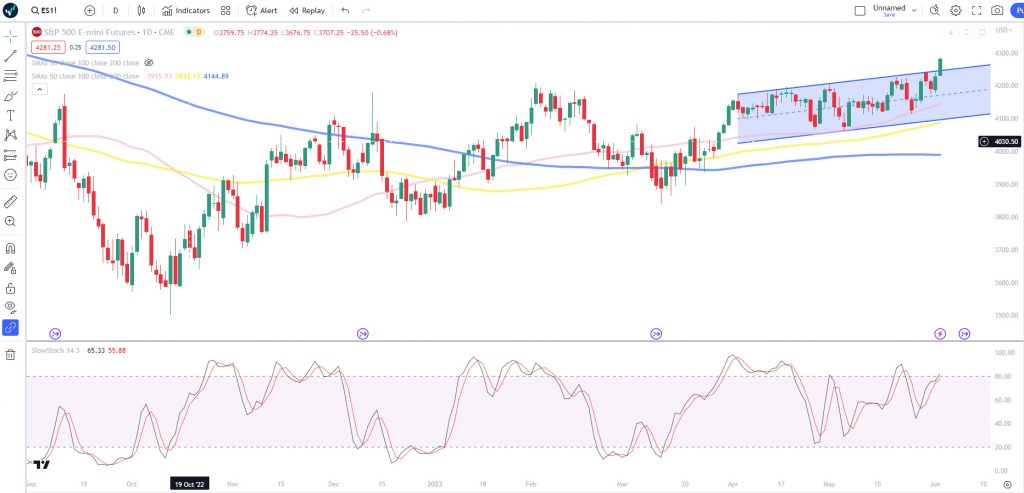- Odds of a June hike from the Fed rose to 32%, up from 22% before the NFP release
- Robust hiring won’t allow dollar to weaken
- Even with participation rate holding steady, the unemployment rate was able to rise from 3.4% to 3.7%
A red-hot labor market remains and that should keep the pressure on the Fed, which will also delay second half of the year recession calls. The May jobs report showed robust hiring, a significant increase in layoffs, and easing wage growth. The last Fed messaging we got before the blackout period (officially starts tomorrow) was positioning the central bank for a June ‘skip’, but that might be hard to do if the ISM Services index impresses and the May inflation report does not show the disinflation process is firmly in place.
US stocks are holding onto gains after a complicated jobs report showed hiring isn’t ready to cool, layoffs are rising, and wage pressures seem to be easing. Traders expecting a “good news” is “bad news” reaction to this payroll report need to dig deeper into the BLS report. NFP day is not just about the headline number, but also about the other components and what that says about the overall economy. We are almost at the midpoint of the year and this economy is not showing strong signs that the second half of the year recession is coming. Corporate America would have you expecting significant weakness would be here given all the pre-layoff announcements and warnings about a challenged consumer that is tapping their savings and driving up their credit card bills. With too much strength still coming from the service sector, this economy doesn’t appear poised to breakdown quickly enough to trigger a recession this year unless we are given a fresh shock. A resilient economy and consumer is short-term good news for the stock market.
US Data
US employers added 339,000 jobs in May, well above the consensus estimate of 195,000, the whisper number of 225,000 and the highest economist forecast of 250,000. Robust hiring in May also included an additional net revision of 93,000 jobs for the prior two months. The April report was bumped up from 253,000 to 294,000.
The Fed might choose to focus on the other parts of the NFP report which showed the unemployment rate posted a hefty increase from 3.4% to 3.7% as 440,000 workers became unemployed. Average hourly earnings came in mostly in-line, with the year-over-year reading ticking lower to 4.3%.
The Fed has almost locked themselves into a corner with a skip for the June meeting, but it should be very clear that they are not done raising rates.










